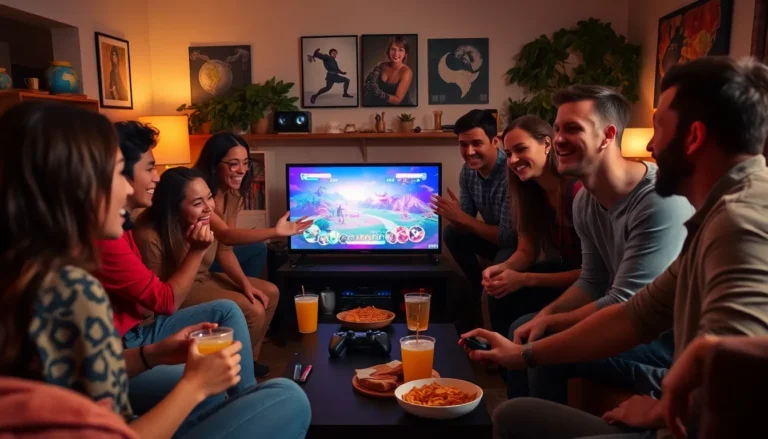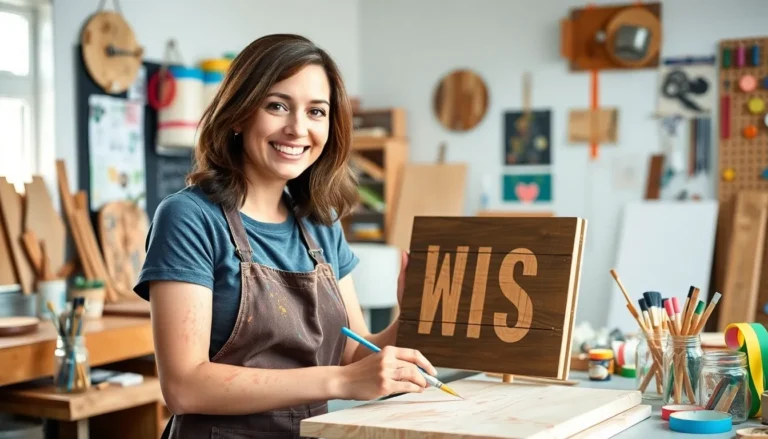Table of Contents
ToggleIn a world where creativity meets technology, the maker community stands out like a glittering unicorn at a tech convention. It’s a vibrant mix of engineers, artists, and DIY enthusiasts who believe that if something doesn’t exist, they’ll just whip it up in their garage. Whether it’s 3D printing a custom figurine or hacking an old toaster into a smart device, these innovators are redefining what it means to create.
Understanding The Maker Community
The maker community thrives on innovation and collaboration. Members express creativity while merging traditional skills with modern technology.
Definition And Origin
The maker community refers to a decentralized network of individuals who engage in hands-on projects. This movement emerged in the early 2000s, fueled by access to affordable tools like 3D printers and microcontrollers. Innovators from various backgrounds—artists, engineers, educators—united to share knowledge and inspire creativity. This collective approach fosters a culture of experimentation and problem-solving while encouraging self-education and learning by doing.
Key Principles Of The Maker Movement
Key principles govern the maker movement, emphasizing collaboration, open-source culture, and creativity. Collaboration brings diverse skills together, allowing individuals to combine their expertise on projects. Open-source culture promotes sharing designs and techniques, ensuring accessibility to all community members. Creativity remains at the forefront, encouraging experimentation and pushing boundaries in technology and art. Sustainability also plays a crucial role, as makers often repurpose existing materials to create new innovations.
The Role Of Technology In The Maker Community

Technology plays a critical role in the maker community, enabling creativity and collaboration among members. Access to specialized tools and platforms enhances the inventiveness of makers.
Tools And Equipment
3D printers, laser cutters, and CNC machines stand out as essential tools within the maker community. These equipments allow for rapid prototyping and experimentation. Microcontrollers like Arduino and Raspberry Pi foster automation and control, encouraging innovative project development. Makers also utilize software applications for design and modeling, enhancing overall efficiency. Each tool contributes uniquely to the creative process, providing capabilities that spark new ideas and improve existing designs.
Online Platforms And Resources
Online platforms significantly enhance collaboration and resource sharing among makers. Websites such as Instructables and Thingiverse offer extensive project ideas and tutorials. Social media groups and forums create vibrant spaces for discussion and support, connecting innovators globally. Crowdfunding platforms enable makers to finance their projects, transforming concepts into reality. Additionally, open-source communities share valuable knowledge, promoting an ethos of collective growth that drives the maker movement forward.
Benefits Of Joining A Maker Community
Joining a maker community provides numerous advantages that enhance personal and professional growth. Members experience unique opportunities for skill development and collaboration.
Skill Development And Learning
Skill enhancement becomes a primary focus within maker communities. Individuals develop technical skills through hands-on projects, experimenting with tools like 3D printers and microcontrollers. Workshops and online tutorials offer access to valuable knowledge, promoting self-paced learning. Feedback from peers fosters improvement in techniques and encourages exploration. Members also gain exposure to various disciplines. This cross-disciplinary interaction sparks innovation and creativity in different domains, leading to well-rounded expertise.
Networking And Collaboration
Networking opportunities abound in maker communities. Participants connect with like-minded individuals who share interests and passions. Collaborations on projects often lead to greater creative outcomes. Access to community events, meetups, and online forums enhances rapport among members. These relationships can extend beyond local groups, creating global connections through platforms like Instructables and Thingiverse. Collaborative projects often blend diverse skills, resulting in unique solutions and fostering a spirit of teamwork. Through this interconnectedness, members not only expand their networks but also inspire each other’s creativity and problem-solving abilities.
Challenges Faced By Maker Communities
Maker communities encounter several challenges that can hinder their growth and impact.
Access To Resources
Accessing essential resources proves difficult for many makers. While tools like 3D printers and laser cutters are crucial, their cost remains a barrier for some individuals. Limited access to high-quality materials also restricts creativity and experimentation. Furthermore, many communities lack dedicated spaces equipped with necessary equipment, complicating collaboration on projects. Local libraries and community centers sometimes bridge this gap, but availability varies significantly. Thus, ensuring sustainable access to these resources requires ongoing effort and support from local governments and organizations.
Inclusivity And Diversity
Inclusivity poses a challenge in many maker spaces. Diverse backgrounds enhance innovation, yet barriers still exist that discourage underrepresented groups from participating. Limited outreach efforts often lead to a lack of awareness about maker communities, especially among marginalized populations. Creating a welcoming environment is essential to engage a broader range of participants. Encouraging inclusive events and workshops can foster a sense of belonging, increasing participation rates. Ultimately, a commitment to diversity not only enriches projects but also strengthens the entire maker community.
The Future Of The Maker Community
The maker community shows promise for innovative contributions to society. Engaging individuals not only enhances personal creativity but also fosters technical skills.
Trends And Innovations
Emerging trends reflect the ongoing evolution of the maker community. Increased adoption of artificial intelligence tools enables makers to design projects with greater precision. Sustainability initiatives drive the use of eco-friendly materials in fabrication processes. Blockchain technology facilitates secure sharing of designs, ensuring creators receive credit for their work. Additionally, virtual reality tools create immersive environments for collaboration and learning experiences. These trends encourage diverse participation while promoting ethical considerations in project development.
Potential Impact On Society
The maker community offers substantial potential to influence society positively. Local economies benefit from job creation in makerspaces and startup ecosystems. Educational advancements occur as makers foster hands-on learning experiences for students. Health and wellness initiatives emerge through innovations in assistive technologies, enhancing quality of life for individuals with disabilities. Communities experience revitalization as collaborative projects unite diverse populations, inspiring civic engagement. Overall, this vibrant movement champions creativity, resilience, and collaboration, shaping a future enriched by innovation.
The maker community stands as a testament to the power of creativity and collaboration. By merging traditional skills with cutting-edge technology, it fosters an environment where innovation thrives. This vibrant network not only enhances personal and professional growth but also drives societal change through hands-on learning and resource sharing.
As it continues to evolve, the community faces challenges that require attention. Addressing issues of inclusivity and resource accessibility will be crucial for its future. Embracing emerging technologies and promoting diverse participation can unlock even greater potential. Ultimately, the maker community remains a beacon of resilience and ingenuity, inspiring individuals to explore their creative capabilities and contribute to a brighter future.




